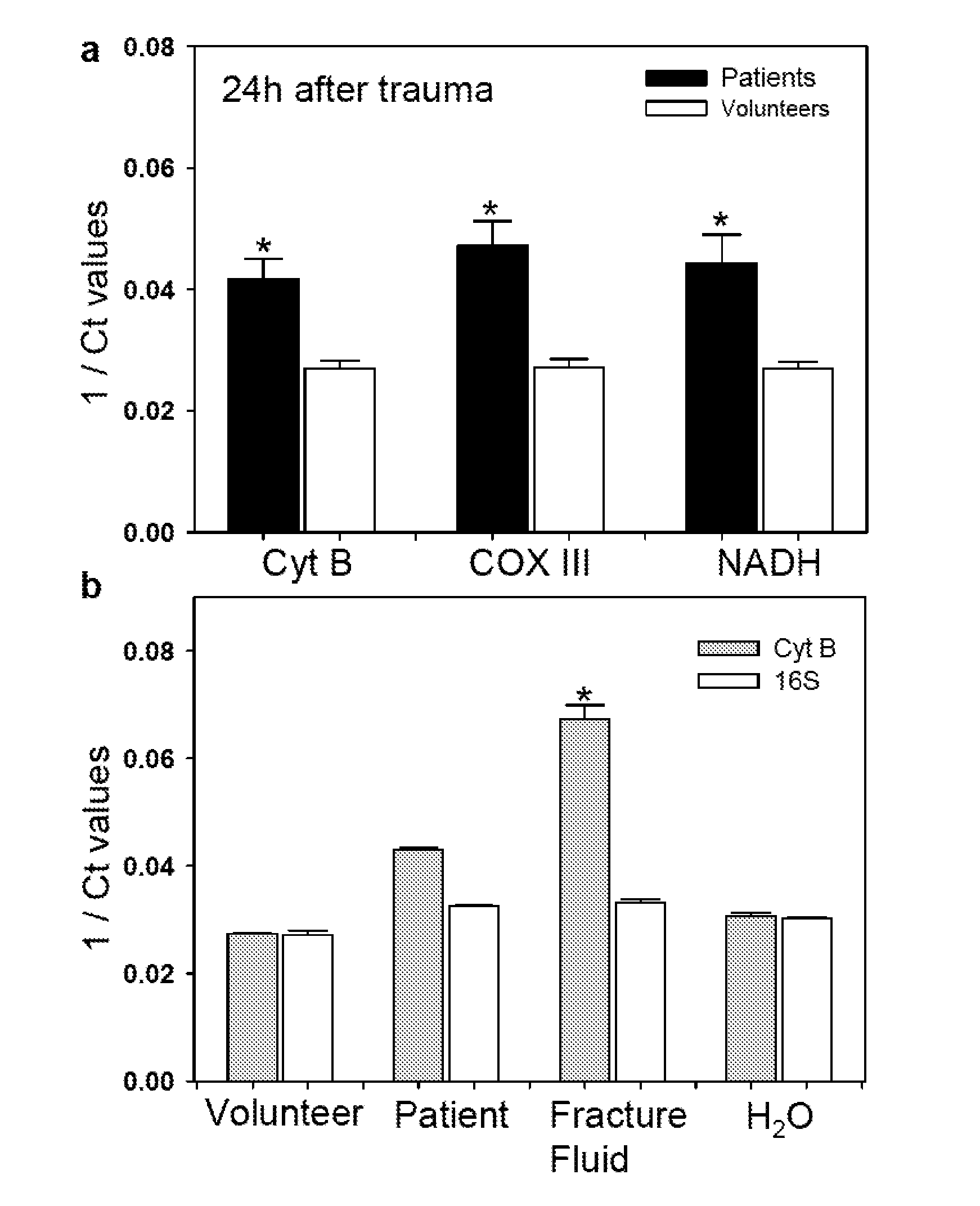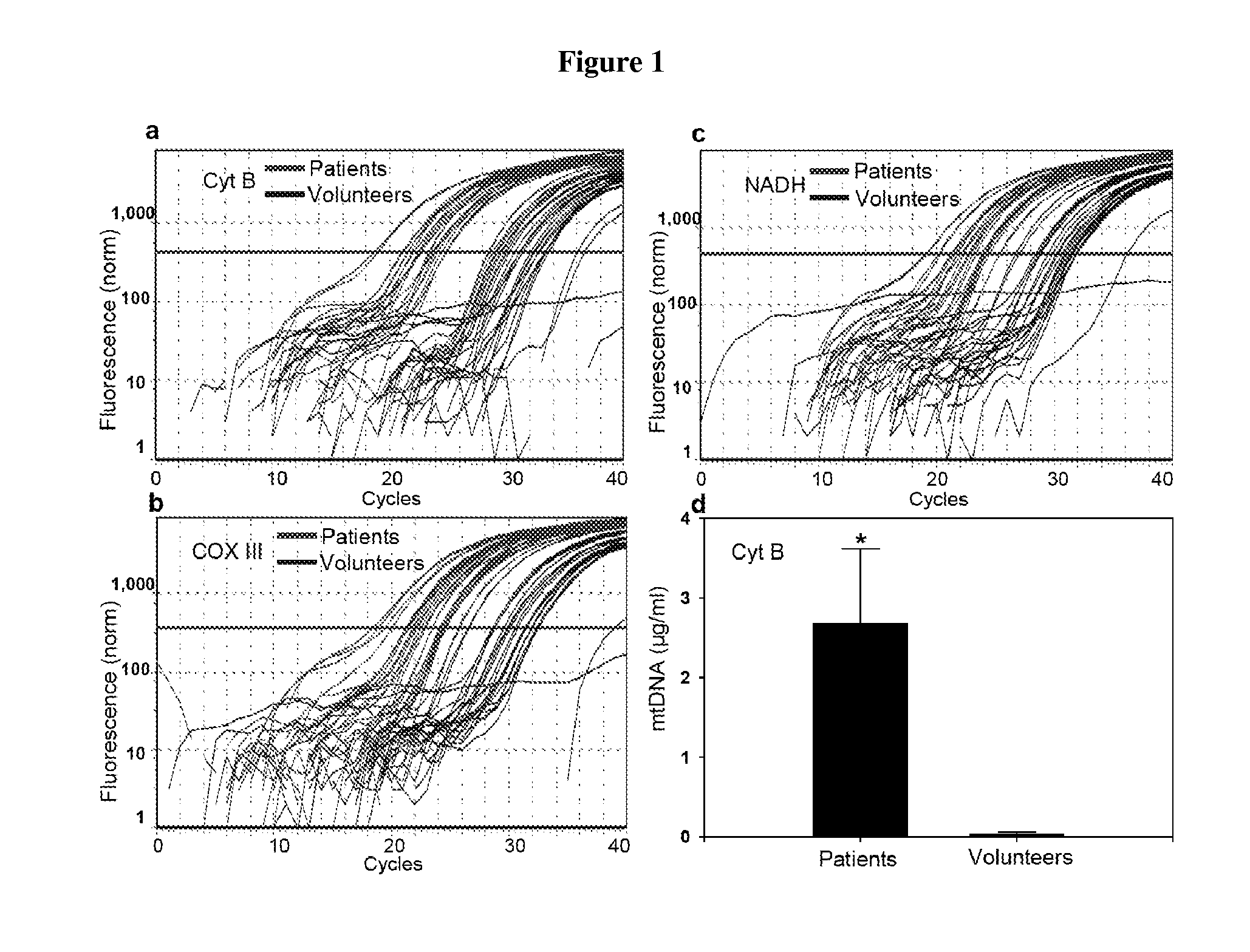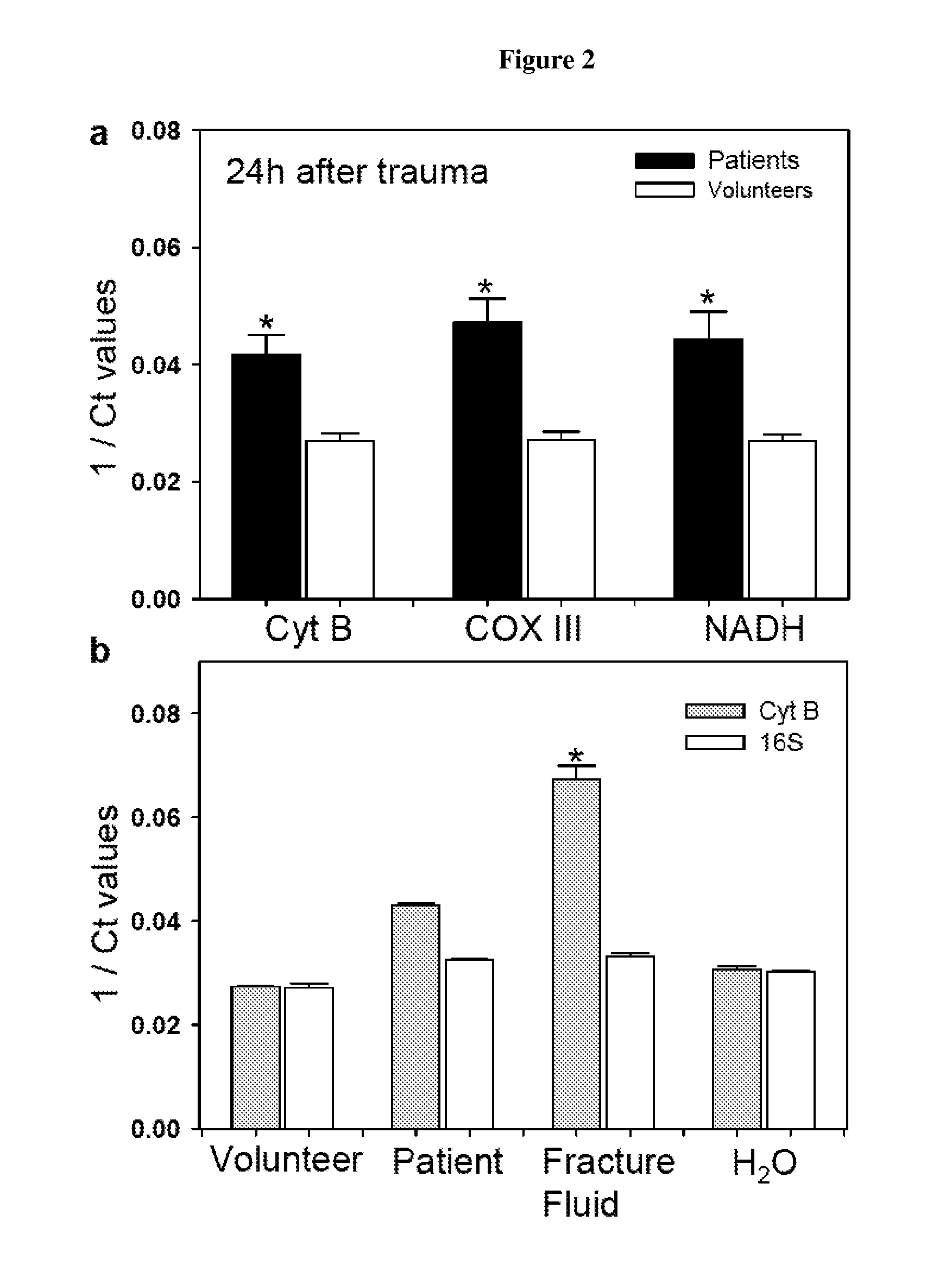Method for predicting and treating a sterile inflammation and discriminating between sterile and infective inflammation
a technology of sterile inflammation and discrimination, applied in the field of predicting and treating sterile inflammation, can solve problems such as neutrophil organ injury, and achieve the effect of increasing propensity and promotorizing pmn ca2+ flux
- Summary
- Abstract
- Description
- Claims
- Application Information
AI Technical Summary
Benefits of technology
Problems solved by technology
Method used
Image
Examples
example 1
Clinical Trauma Releases Mitochondrial DAMPs into the Circulation
[0099]To demonstrate that major trauma releases MTD into the circulation, we used qPCR to measure plasma mtDNA obtained from 15 major trauma patients with Injury Severity Scores (ISS)>25. Samples were taken prior to resuscitation. Patients had no apparent open wounds or gastrointestinal injuries, excluding wound contamination and ischemia-reperfusion injury as sources of bacterial DNA (clinical details in Table 1). Major trauma markedly elevated plasma titers of mtDNA encoding cytochrome B (Cyt B, FIG. 1A), cytochrome C oxidase subunit III (COX III, FIG. 1B), and NADH dehydrogenase (NADH, FIG. 1C) when compared to healthy volunteer plasma (Table 2, n=12). These primer sequences have no significant homology with DNA found in any bacterial species published on BLAST. mtDNA concentration in trauma patient plasma was 2.7±0.94 μg / ml, where volunteer levels were a thousand times lower (FIG. 1D). Plasma mtDNA was still higher...
example 2
Clinical Trauma Releases Mitochondrial DAMPs into the Circulation
[0148]Trauma / Hemorrhagic Shock Releases mtDNA into the Circulation
[0149]Experiments were performed to determine whether mtDNA was released into the circulation in response to trauma / hemorrhagic shock (T / HS) in a rat model. Real-time PCR was used to evaluate mtDNA and nuclear DNA (nDNA) in the plasma of naive rats and of rats subject to T / HS. As seen in FIG. 17A, there was a marked elevation in plasma mtDNA levels in rats subjected to T / HS as compared with naive rats (p<0.001). mtDNA levels reached a peak at 1 day and gradually declined thereafter, but levels were still significantly elevated seven days after T / HS. Glyceraldehyde 3-phosphate dehydrogenase (GAPDH), a genomic DNA marker, was only significantly increased 3 hours after T / HS (FIG. 17B). These data indicate that T / HS causes tissue damage, which releases both mtDNA and nDNA into the circulation.
mtDNA Activates PMN p38 MAPK
[0150]Additional experiments were perf...
example 3
Pancreatitis Releases Mitochondrial DAMPs into the Pancreatic Fluid
[0173]Additional experiments were performed to determine whether mtDNA is released into the pancreatic fluid in a rat having pancreatitis. In these experiments, the amount of mtDNA and bacterial DNA in pancreatic fluid in control rats and a rat model of pancreatitis were determined using real-time PCR. The fold-increase in mtDNA and bacterial DNA in pancreatic fluid relative to control is depicted. The resulting data show that mtDNA is increased in the pancreatic fluid in a rat having pancreatitis (FIG. 22). These data indicate that pancreatitis also releases mtDNA into the pancreatic fluid of a subject.
Materials and Methods
[0174]DNA was isolated from 200 μL pancreatic juice and eluted with 80 μL water. Real-time qPCR was performed on the samples using primers for mitochondrial cytochrome B (mtDNA) and 16S rRNA (bDNA) as described above. Water was used as a negative control.
[0175]From the foregoing description, one s...
PUM
| Property | Measurement | Unit |
|---|---|---|
| diastolic blood pressure | aaaaa | aaaaa |
| diastolic blood pressure | aaaaa | aaaaa |
| diastolic blood pressure | aaaaa | aaaaa |
Abstract
Description
Claims
Application Information
 Login to View More
Login to View More - R&D
- Intellectual Property
- Life Sciences
- Materials
- Tech Scout
- Unparalleled Data Quality
- Higher Quality Content
- 60% Fewer Hallucinations
Browse by: Latest US Patents, China's latest patents, Technical Efficacy Thesaurus, Application Domain, Technology Topic, Popular Technical Reports.
© 2025 PatSnap. All rights reserved.Legal|Privacy policy|Modern Slavery Act Transparency Statement|Sitemap|About US| Contact US: help@patsnap.com



